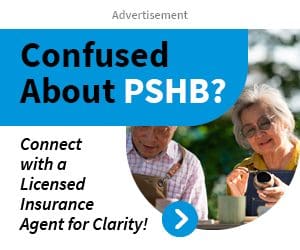Key Takeaways
-
The Postal Service Health Benefits (PSHB) program provides tailored health coverage options for USPS employees and retirees, offering unique features like Medicare integration and prescription drug benefits.
-
Understanding your plan options and enrollment rules ensures smooth navigation of the PSHB system, helping you secure comprehensive health coverage for you and your family.
Introduction to PSHB: A New Era in Health Coverage
2025 marks a significant shift for USPS families as the Postal Service Health Benefits (PSHB) program replaces the Federal Employees Health Benefits (FEHB) system. If you’re part of a USPS family, this new landscape brings opportunities for tailored benefits alongside some challenges. Navigating these changes effectively requires an understanding of your options, eligibility rules, and the integration of Medicare.
Let’s break down what you need to know to make informed decisions and maximize your benefits.
Key Differences Between FEHB and PSHB
A Customized Approach for USPS Employees
The PSHB program is specifically designed for Postal Service employees, retirees, and their families. Unlike the broader FEHB system, PSHB caters exclusively to USPS members, allowing for plans and premiums that reflect the unique needs of postal workers. This shift ensures better alignment with your requirements, but it also means that you’ll need to carefully review new plans and benefits.
Medicare Integration Requirements
For Medicare-eligible annuitants and family members, PSHB introduces a new integration with Medicare Part B. This ensures comprehensive coverage and lowers out-of-pocket costs for retirees. If you retired on or before January 1, 2025, or are over 64 as of this date, you may be exempt from enrolling in Medicare Part B. Understanding these rules is crucial to maintaining uninterrupted coverage.
Enrollment Guidelines and Key Dates
Automatic Enrollment for Current Participants
If you were enrolled in an FEHB plan, you are automatically enrolled in a corresponding PSHB plan starting January 1, 2025. However, this automatic enrollment doesn’t guarantee the best fit for your needs. Reviewing your plan’s coverage, costs, and benefits is essential during Open Season or when qualifying life events occur.
Open Season Opportunities
The annual Open Season ran from November 11 to December 13, 2024. If you missed this window, changes to your plan can only occur during specific qualifying life events, such as marriage, birth, or a job change. Mark your calendar for the next Open Season to review and update your plan as needed.
Navigating Medicare Integration with PSHB
Why Medicare Part B Matters
Medicare Part B enrollment is mandatory for most PSHB enrollees who are Medicare-eligible. This integration reduces costs for hospital and medical services by coordinating benefits. PSHB plans often include features like waived deductibles or Part B premium reimbursements to offset costs.
How Medicare Works with PSHB Plans
If you’re already enrolled in Medicare Part B, PSHB automatically complements your coverage. Prescription drug benefits are provided through a Medicare Part D Employer Group Waiver Plan (EGWP). These benefits ensure minimal out-of-pocket expenses for medications, a significant advantage for retirees managing chronic conditions.
Benefits Beyond Basic Coverage
Enhanced Prescription Drug Coverage
PSHB plans incorporate prescription drug benefits under Medicare Part D. This eliminates the “donut hole” coverage gap, as a $2,000 annual out-of-pocket cap applies to prescription drug costs. This feature provides financial relief and predictable medication expenses.
Supplemental Benefits to Meet Diverse Needs
PSHB plans often include supplemental benefits like dental, vision, and hearing coverage. These enhancements support your overall well-being, reducing the need for separate policies. Ensure you review each plan’s specifics to identify which supplemental benefits are most valuable for your family.
Cost Considerations and Savings Opportunities
Government Contributions
As with FEHB, the government contributes significantly to PSHB premiums, making it more affordable than private health insurance options. This contribution reduces your out-of-pocket expenses, leaving more room in your budget for other essentials.
Aligning Medicare Enrollment with Cost Reductions
If you’re eligible for Medicare, coordinating your PSHB and Medicare benefits can lead to substantial savings. Medicare’s coverage for hospital stays, doctor visits, and medications complements PSHB, resulting in lower overall costs. Additionally, some PSHB plans offer reimbursements for Medicare Part B premiums, effectively offsetting this expense.
Tips for Choosing the Right PSHB Plan
Understand Your Family’s Needs
Start by evaluating your family’s healthcare needs. Consider factors like:
-
Frequency of doctor visits
-
Chronic conditions requiring regular management
-
Prescription drug use
-
Need for supplemental benefits like dental or vision
Choosing a plan that aligns with your usage ensures you’re not overpaying for unnecessary features.
Compare Coverage Options
During Open Season or after qualifying life events, review available plans carefully. Use tools provided by the U.S. Office of Personnel Management to compare premiums, coverage, and benefits side by side. This ensures you select a plan offering the best value for your situation.
Don’t Overlook Plan Communications
Each year, your plan will send an Annual Notice of Change (ANOC) detailing updates to premiums, benefits, and coverage. Take the time to read these notices to avoid surprises and ensure your plan continues to meet your needs.
Managing Coverage Changes During Qualifying Life Events
Examples of Qualifying Life Events
Certain life changes allow you to modify your PSHB plan outside Open Season. Examples include:
-
Marriage or divorce
-
Birth or adoption of a child
-
Changes in employment status
Steps to Update Your Coverage
When a qualifying event occurs, notify your benefits administrator promptly. You typically have 60 days from the event to make changes. Acting quickly ensures uninterrupted coverage and avoids potential penalties.
Leveraging Additional Resources
Online Tools and Support
The U.S. Office of Personnel Management offers online resources to help you understand PSHB options. From plan comparison tools to FAQs, these resources simplify complex decisions and provide clarity.
Contact Your Benefits Administrator
Your benefits administrator is a valuable resource for answering questions, resolving issues, and ensuring smooth transitions between plans. Don’t hesitate to reach out for personalized assistance.
Staying Ahead in 2025 and Beyond
As PSHB evolves, staying informed is key to maximizing your benefits. Mark your calendar for important dates, review communications from your plan, and take advantage of available resources. With proactive planning, you can ensure your family’s health coverage remains comprehensive and affordable.
Empower Your Family’s Health Coverage Decisions
Navigating the PSHB landscape doesn’t have to be overwhelming. By understanding your options, leveraging available resources, and staying proactive, you can make confident decisions that safeguard your family’s health and financial well-being. Take charge today and ensure your coverage fits your needs—both now and in the future.










